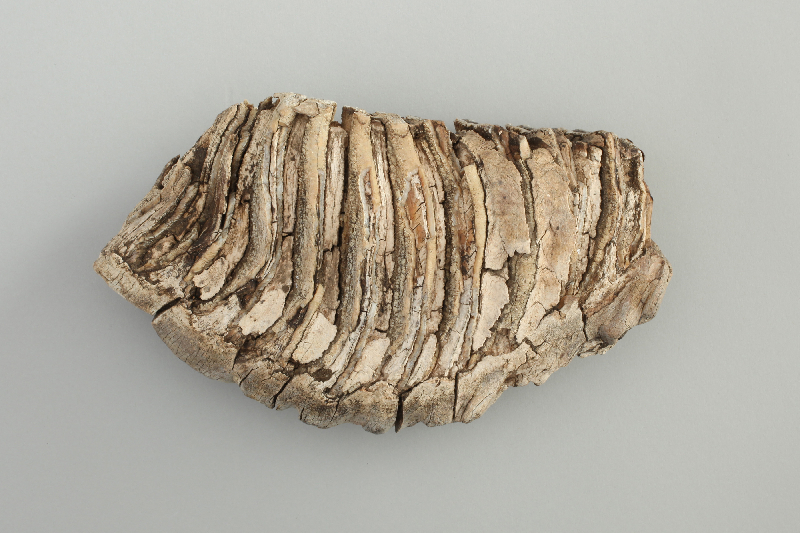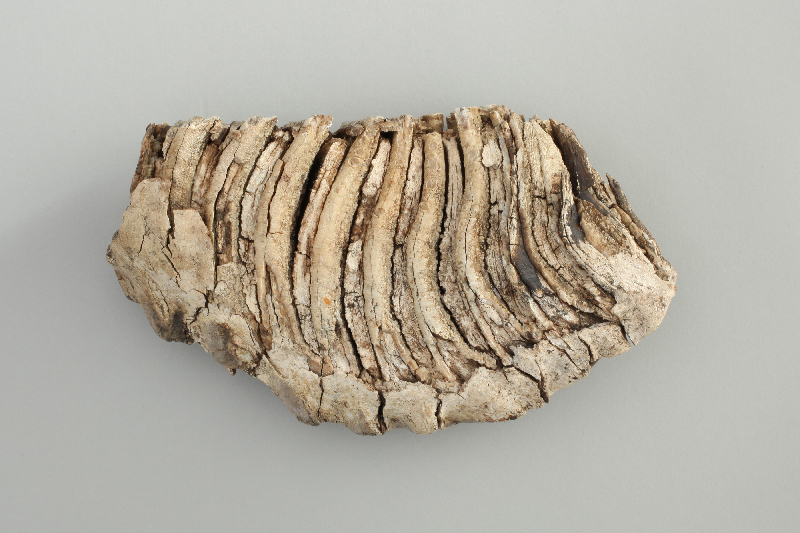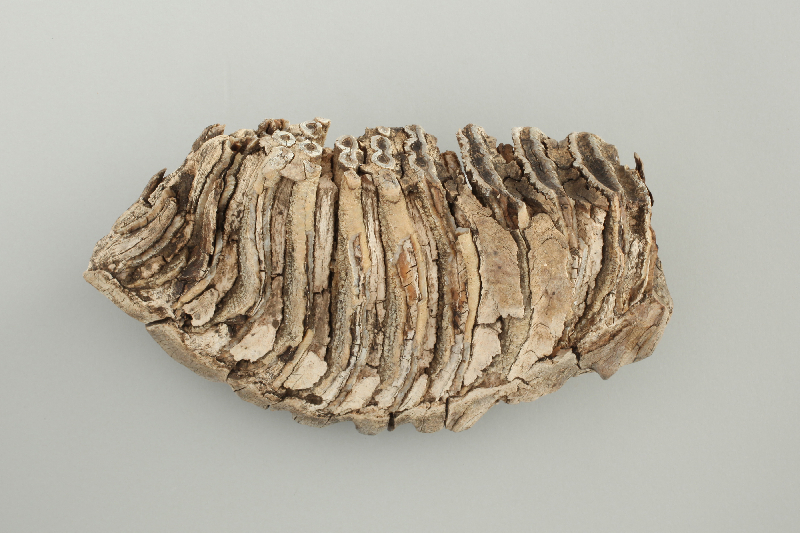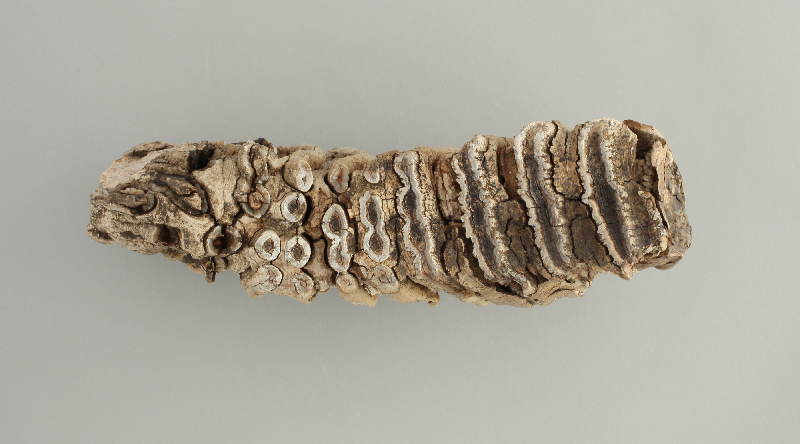- 資料名
- ナウマンゾウの歯
- 展示の有無
- 有
- 採集地
- 湯沢市水瀬
- 学名
- Palaeoloxodon naumanni
- 資料解説
-
秋田県内では、潟上市の天然アスファルト層、男鹿半島の北海岸、湯沢市で6個以上見つかっている。
ゾウの仲間は植物をすりつぶすための臼歯が上下のアゴに2本ずつ生えている。1本の歯は、たくさんの板が前後に重なった形状をしており、かみ合わせの面にできる模様でゾウの種類が分かる。
またゾウは食物を大量に食べるので歯がすり減りやすく、一生の間に6回も生えかわる。このときすり減って小さくなった歯が前方に移動し、後方から新しい歯が徐々に顔をだしてくる。後から生える歯の方が大きいので、何番目の歯を使っているか調べるとゾウのおよその年齢が分かる。
この標本は、沢で拾われたもので、正確な産出地点、産出地層は不明である。
In Akita, more than six specimens have been found in Katagami's natural asphalt formation, the northern coast of the Oga Peninsula, and Yuzawa.
Elephant species have two molars each on the upper and lower jaw for grinding plant vegetation. Its teeth have the shape of many overlapping boards, so the elephant species can be determined by the bite pattern on the surface of the tooth.
Also, elephants eat a lot of vegetation, so their teeth are easily worn down. In an elephant's lifetime, six new sets of teeth can grow in. The worn down teeth move to the front and the new teeth slowly move in from the back. The teeth that move in from the back are larger than the worn down teeth, so an elephant's age can be determined depending on what set of teeth it is using.
This specimen was gathered from a swamp so its accurate site and stratum are unknown.




